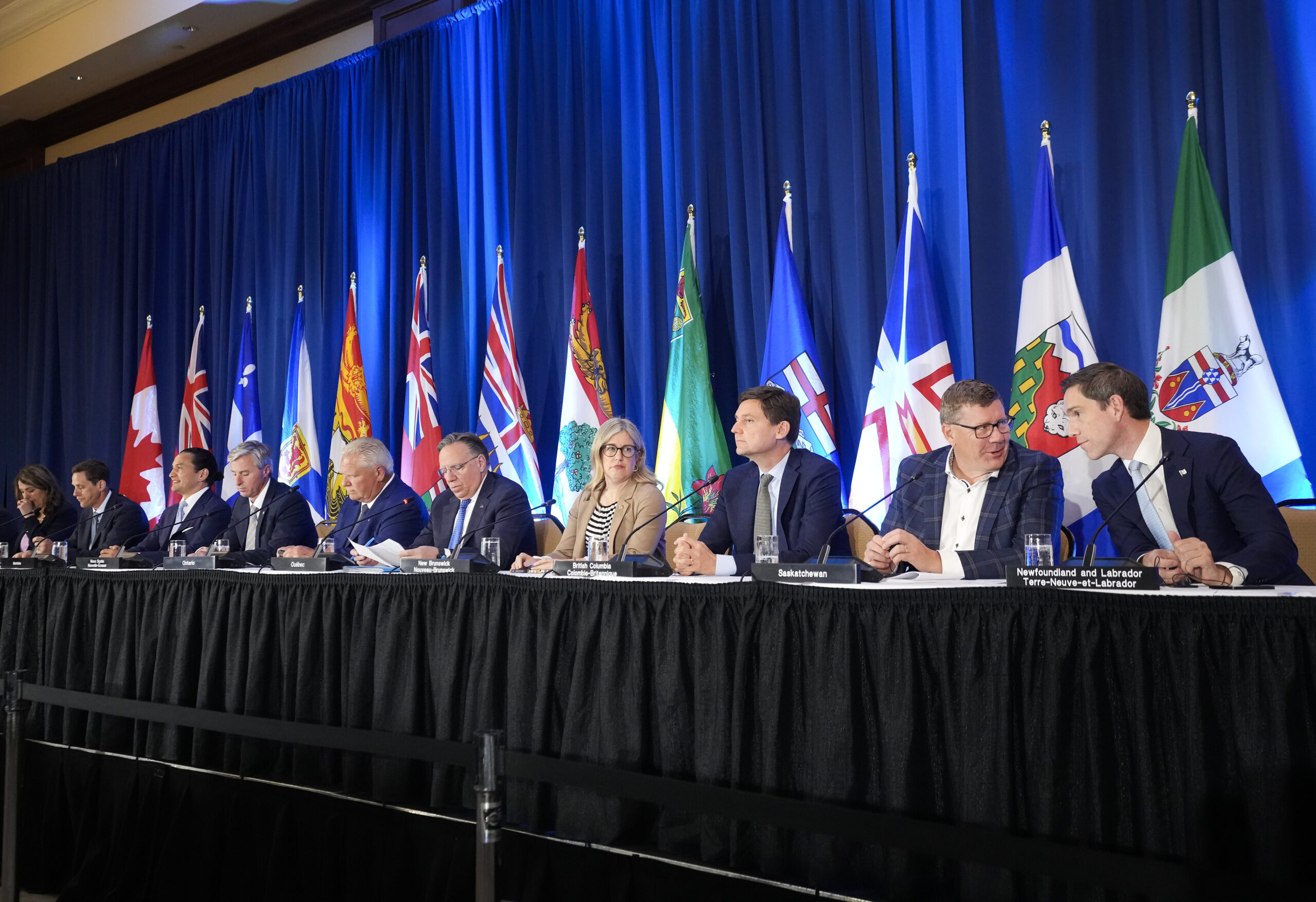(Version française disponible ici)
Since the United States imposed tariffs, the issue of interprovincial trade has become a major concern in Canada. Strengthening our internal market would not only lessen the impact of tariffs, it would also have major economic benefits. In 2023, goods and services worth more than $530 billion (20 per cent of GDP) flowed from one province to another. And this figure could be even higher if the market were more harmonized.
For example, the Quebec government estimates that a complete removal of trade barriers would allow businesses in the province to generate up to $45 billion in additional revenue annually.
In the short term, a harmonized market would be a significant driver of growth for the Canadian economy. A study by Ryan Manucha and Trevor Tombe shows that mutual recognition could generate between $100 billion and $200 billion for the Canadian economy.
Of course, these figures must be put into perspective. Former Quebec premier Philippe Couillard observes that “we too often tend to attribute broad virtue to the removal of barriers to interprovincial trade.” As proof, he points to a study by HEC Montréal, that found less than one per cent of businesses identify regulation as the main reason they do not participate in interprovincial trade.
Nevertheless, the provinces and Ottawa have been redoubling their efforts to facilitate interprovincial trade since last spring. Nine out of 10 provinces have announced their intention to legislate on this issue. Only Newfoundland and Labrador has not yet acted, but the province’s newly elected government could announce legislative intentions in the coming year.
The announcement of these urgent reforms within a compressed legislative calendar has produced a patchwork of laws and bilateral agreements rather than a common framework. Reacting too quickly to external pressures risks further burdening a market already saturated with interprovincial constraints with new laws and regulations.
The challenge is therefore to standardize without adding complexity, while respecting the specificities of the provinces: peoples, languages, and size of territory. Since most of the powers related to Canada’s domestic market lie with the provinces, this uniformity cannot depend solely on the political will of the federal government. In other words, the liberalization of interprovincial trade is in the hands of the provinces, each with its own specific characteristics and interest in protecting their own market.
So, how can we ensure that Canada’s domestic trade reaches its full potential? Here are four conditions for achieving this:
1. Systematically recognize credentials
There must be mutual and systematic recognition of certifications issued by other provinces. This recognition is essential to ensure the free movement of labour, goods and services across provincial borders. If a product or service provider meets the requirements in province A, that should be sufficient to meet the requirements in province B.
At present, this harmonized mutual recognition is lacking in Canada, as Ryan Manucha points out. The legislation that has already been announced seems to be partly dedicated to addressing this. To ensure that free movement can be effective, he says governments must ensure that it is rationalized and aligned for workers and small businesses. Next, there must be a genuine relationship of mutual trust between governments and regulatory bodies in different provinces. Finally, communication between authorities must allow for feedback.
To this end, the federal government should work with the provinces to develop a framework for evaluating mutual recognition legislation.
2. Pass laws to make reforms stick
Legislating to harmonize internal trade in Canada is difficult, but it is also necessary for these laws to endure over time. For the proposed reforms to be effective and permanent, economists Daniel Teeter and Christopher Cotton propose a four-step roadmap:
- Change the default settings so that these exemptions and deadlines expire automatically if they are not renewed.
- Make the rules more effective by strengthening regulatory authority and enforcement.
- Provide support and incentives so that provinces and businesses see the real benefits of liberalization.
- Invest in infrastructure, innovation, and talent to increase market size and competitiveness.
3. Compensate financial losses
The federal government should look to promote regulatory convergence by offering to support provinces that commit to harmonization. In the event of significant financial losses caused by the removal of trade barriers, the federal government should consider compensation to offset them (e.g., alcohol sales or professional licenses).
The federal government would thus assume a cooperative rather than a coercive leadership role, as stated by Marion Sandilands. The effects of such an approach are likely to be more positive than in a case where the provinces are seen as mere executors. As Stéphane Paquin observes, Canada can only achieve its ambitions when the provinces are fully involved in the decision-making process and not merely seen as responsible for implementing pre-determined policies.
4. Include Indigenous communities
Without the genuine inclusion of Canada’s Indigenous communities in this collective reflection on internal trade, improving our market and how we do business with each other cannot truly succeed.
As Maryse Picard writes, too often these reforms are thought of as “interprovincial” negotiations, when they should recognize the place of Indigenous economies and treaties. Their inclusion is not incidental and will determine the legitimacy of any new common economic space.
This also applies to investments in infrastructure. The recent Building Canada Act, which speeds up major infrastructure projects, has been heavily criticized by Indigenous communities. Disappointed by the consultation process, which they consider more symbolic than real, First Nations fear the consequences that these national projects will have on their communities.
Canada’s economic success depends in part on its ability to truly include Indigenous Peoples. There will be no mutual recognition that works without Indigenous recognition.
More than an economic slogan
Never in Canadian economic history have trade relations with the United States been so strained. This rise in American protectionism gives Canadian domestic trade strategic importance. But it must be more than a defensive reflex or an economic slogan.
The idea is not to liberalize at all costs, but to build a more fluid market without sacrificing the diversity of provincial models, the protection of environmental standards, and the vitality of the languages and cultures that make up the Canadian federation.
This reflection is taken from the series of articles Barriers and Bridges: Rethinking Trade within the Federation produced by the Centre of Excellence on the Canadian Federation, a research initiative of the Institute for Research on Public Policy (IRPP).












